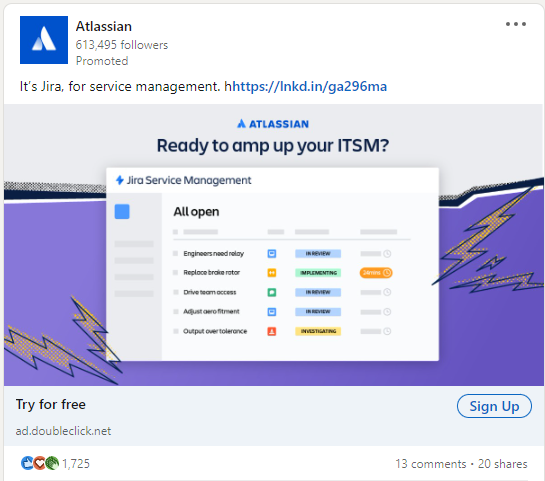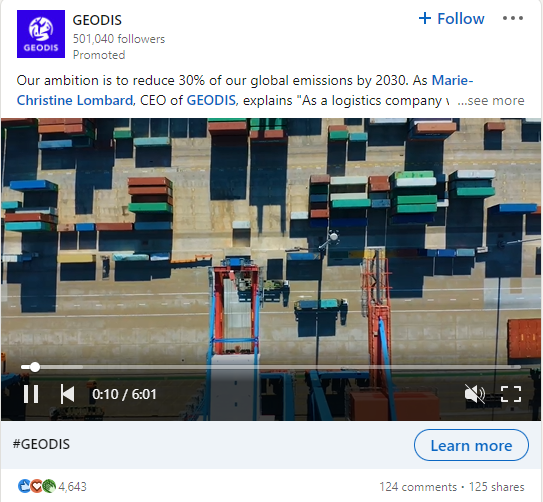A digital ads campaign can only be successful through the proper choice of a platform. However, it’s not that simple and unfortunately, no one has a magic wand to let us know which platform to use for which business or industry. Each platform has some pros and some cons. What works for one business may not work for another.
As a business, you should be weighing the advantages (and disadvantages!) of the different advertising channels. A common comparison is LinkedIn Ads vs Google Ads. They’re amongst the best out there, but they function in different ways that serve different purposes.
In this article, we’ll be discussing the similarities and differences between LinkedIn and Google Ads while highlighting some of their qualities and how they can work in your favour as a business. Stay tuned.
LinkedIn ads vs Google ads – Similarities & differences

Target audience
Not many can disagree with the fact that Google has a wider reach worldwide. Its ad reach stands at 4 billion people. Not only that, but Google also controls about 70% of desktop searches. Google mobile search market percentages go up to 90%.
Google’s search is very popular as it’s very specific with target search terms that are usually accompanied by specific ads. People tend to Google very specific things, so if you manage to customise your ads based on your target audience’s searches, you’ll be left with many leads.
So, it’s safe to assume that most businesses’ target audiences are frequent users of Google to some degree. That could always work in favour of companies when targeting their audiences.
On the other hand, businesses that would like to limit their search may struggle to set their ads right with Google Ads. You need to be very specific about what keywords to target and what not to target. Negative keywords are a must. And if you don’t segment your audiences correctly, your digital ad campaign will struggle. Or, you’ll end up spending way more than you wanted to.
A narrower audience can be found on LinkedIn. Its 500 million users are mainly businesses and business professionals. This makes LinkedIn more effective for B2B marketing.
Lead generation
When it comes to lead generation, Google Ads tends to have an advantage since it has a much wider reach than that of LinkedIn. Indeed, you can bring in a good number of potential clients without having to exhaust your budget much.
This is mainly due to the fact that you would be targeting people who come to a search engine with the intent of finding a product or a service (most of the time).
LinkedIn, on the other hand, can be somewhat trickier for lead generation since most people have to sign in before they can even interact with your ads. Still, LinkedIn allows marketers to easily target leads more precisely, through message ads, for example. These ads, with the help of lead gen forms, can be of great help.
There is also the fact that LinkedIn allows you to get a profile of the leads. Google, on the other hand, relies on keywords. In other words, there is little to no focus on the detailed profiles of leads.
In conclusion, generally speaking, lead generation tends to be more efficient on Google Ads. However, LinkedIn offers an opportunity to find more valuable leads if you wish to put effort into it.
Types of ads
Unlike LinkedIn, Google offers more options of ad types. That is not to say that they both don’t offer their own special formats:
LinkedIn offers the following ad types:
- Text Ads: Ads that are displayed in the side margin or Inline. They’re usually PPC (pay-per-click)
- Sponsored InMail: Advertising messages personalised to target highly specific recipients
- Direct Sponsored Content: Direct ads found within the feed of LinkedIn
- Lead Gen Forms: Forms that are already filled and found within ads. These ads are mobile-exclusive and are available in Sponsored Inmail and Sponsored Content
- Dynamic Ads: These personalised ads are desktop exclusive, and they appear on the right rail. They are generated dynamically
Here are some examples of LinkedIn Ads:


Google ads
On the other hand, Google Ads include the following types:
- Video: In-stream and standalone ads that make it to clients on Google partner websites
- Image: Interactive graphics that make it to clients on Google partner websites
- Text: Ads that have only words that reach clients on Google search
- Call-Only Ads: Available only on devices that make phone calls, these ads are click-to-call
- App Promotion Ads: Their purpose is to encourage app installs and activity on all Google platforms and partners
- Shopping Ads: Ads to reveal an image and details about a product to customers
- Responsive: Ads of different types that adjust format, appearance, and size according to the ad space
- Showcase Shopping Ads: An image accompanied by a description to click on to reveal information and similar or related products
Here are some examples of Google Ads:



Reporting and analytics
Both LinkedIn and Google Ads provide marketers with metrics about ad performance, including impressions, clicks, and conversions. However, Google Ads might have somewhat of an advantage in this department as it easily links to Google Analytics.
This doesn’t necessarily mean that the reporting and analytics capabilities of LinkedIn aren’t good enough; it’s just that Google Analytics is inherently superior. However, you can track LinkedIn Ads campaigns in Google Analytics. But, it requires a bit of work and isn’t as seamless as Google Ads, of course.
Cost
Average ad costs on LinkedIn are usually pricier than those of Google. For Google, you can choose cost-per-impression or cost-per-click. For InMail advertising, LinkedIn also has a cost-per-impression feature.
The average CPC for Google Ads is usually £1.95. Though, to take advantage of that low cost, you have to work hard on your audience segmentation. If not, you will be met with an ROI lower than what you expect.
With LinkedIn Ads, the average CPC is £3.18. Keep in mind that these costs vary from one industry to another.
LinkedIn ads vs Google ads – Pros and cons

Here are some of the pros and cons of both LinkedIn Ads and Google Ads to paint a clearer image for you.
LinkedIn Ads – Pros
Quick and easy entry
Launching a digital advertising campaign on LinkedIn is a matter of minutes. Unlike any other platform, LinkedIn allows you to go live almost instantly, which is ideal in situations where you’re looking for instant results. However, we’d definitely advise that you’re careful with this – quicker doesn’t always mean better.
Focus on messaging
Initially, LinkedIn was a platform for recruiters and HR people to look for suitable candidates. Now, their focus has also shifted towards connecting brands with their audience through messages.
If you’ve ever used LinkedIn, you’re definitely familiar with this feature, as you must’ve received some Message ads from vendors. The usefulness of messages lies in their ability to create relationships or nurture already existing ones. It can also build affinity and support marketing goals.
LinkedIn ads – Cons
Absence of custom reporting
The dashboard of reporting on LinkedIn offers advertisers little to nothing. It doesn’t provide them with the ability to customise reporting views like Facebook, or other programmatic platforms do. In some instances, this is a deal-breaker for advertisers.
Minimum budgets
LinkedIn campaigns require a minimum daily budget of $10, that’s around £8 (as of April 2022). This figure isn’t particularly high for marketers who are serious about their marketing endeavours on LinkedIn. However, if you happen to be a small business owner with an ever smaller advertising budget, then this might be a problem.
You could be committing to well over £3,000 if you keep your ads running at a minimum all year round. And again, although that figure might not be much in the grand scheme of things, it can greatly affect a business, especially if their marketing efforts fail on LinkedIn.
Google Ads – Pros
Exposure to search results
Google Ads can give you the chance to appear on the first page, which will help tremendously with exposure. Appearing to your audience in the right place and at the right time is ideal for your business.
Instant results
If you’re looking to drive more people to your website in a quick manner, Google Ads is your friend. SEO can take a long time to work effectively.
Google ads – Cons
Paying for each click
Unfortunately, Google Ads makes you pay for each ad click to your website no matter the intentions of the person or client. So, you may find yourself in situations where you’re paying for useless clicks.
Adverts limitations
Google Ads limits the number of characters. You are to have two large 90 character description lines, a customisable display URL and three 30 character headlines. With that, you must include all tricks to make your ad catchy. This includes proper keywords, attention-grabbing headlines and more.
So, which is ideal for your business: LinkedIn ads or Google ads?
There is no true answer to that question. Both provide marketers with great exposure opportunities, and neither is a true perfect platform. However, your choice of platform depends on your own brand’s goals and specific strategy requirements.
Before making your choice, you must specify these requirements and familiarise yourself more with the world of digital advertising and marketing. Your platform must work hand in hand with your own brand visions.
Let us take care of your digital marketing needs
No matter which platform you’re using to run ads, we can help you take your digital advertising efforts to the next level. Just book a discovery call with us, and we’ll take care of the rest.



0 Comments